SOURCE: RAUNAK KUNDE / NEWS BEAT / IDRW.ORG
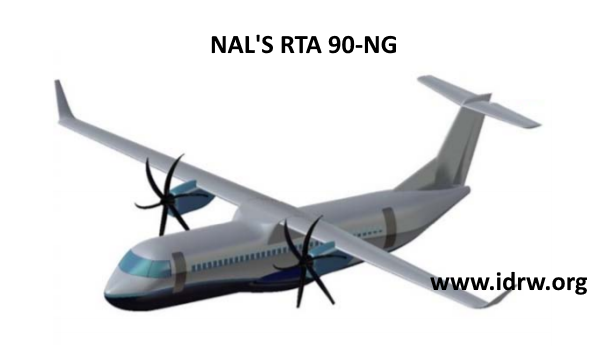
The ambitious plan to develop a 90-seater regional transport aircraft (RTA) for India faces a major roadblock: a lack of funding. C.B. Ananthakrishnan, Chairman and Managing Director of Hindustan Aeronautics Ltd (HAL), confirmed that the project is currently stalled due to the $2 billion funding requirement yet to be approved.
Ananthakrishnan outlined two potential approaches: a clean sheet design and a derivative design based on an existing aircraft. While the clean sheet design, offering more flexibility but higher costs, would require two phases of development (engineering & prototype manufacturing), the derivative option might be more cost-effective. However, both options remain dependent on securing the necessary funds.
Continue readingSOURCE: RAUNAK KUNDE / NEWS BEAT / IDRW.ORG
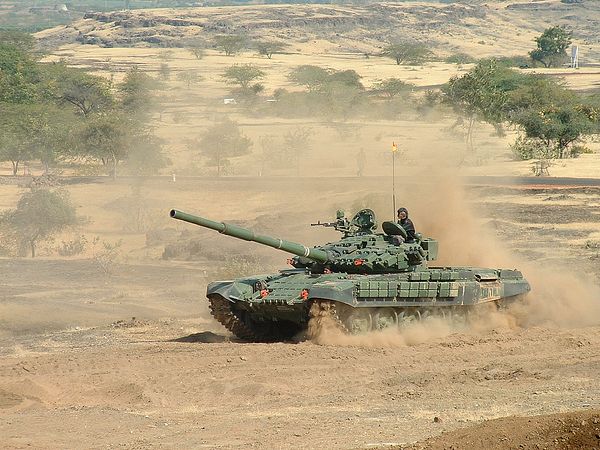
The Indian Army is poised for a major shakeup in its armoured fleet as it grapples with the impending retirement and storage of over 50% of its T-72 tanks within the next 7-8 years. These Soviet-era workhorses, serving as the mainstay of the Indian Army since 1982, are approaching their end of life, while their replacement program, the Future Main Battle Tank (FMBT), remains stalled after a decade of delays.
The Army currently operates around 2,400 T-72 tanks, most of which have exceeded their 30-year service life. While extensive overhauls provided an extra 10-15 years, these tanks lack the modern capabilities needed for contemporary warfare. The situation is further complicated by the Russia-Ukraine war, hindering access to critical spares for maintenance and repairs.
Continue readingSOURCE: RAUNAK KUNDE / NEWS BEAT / IDRW.ORG
The Indian Air Force (IAF) and Hindustan Aeronautics Ltd. (HAL) are nearing a major deal with GE Aerospace Defence & Systems for the F414 engine, a significant step forward for the Light Combat Aircraft (LCA) Mk2 and Advanced Medium Combat Aircraft (AMCA) programs.
GE President Amy Gowder last month confirmed progress on the deal, stating that a detailed technical proposal will be submitted to HAL soon. The final contract, including component specifications and costs, is expected before summer, paving the way for engine production.
Continue readingSOURCE: IDRW.ORG TEAM.
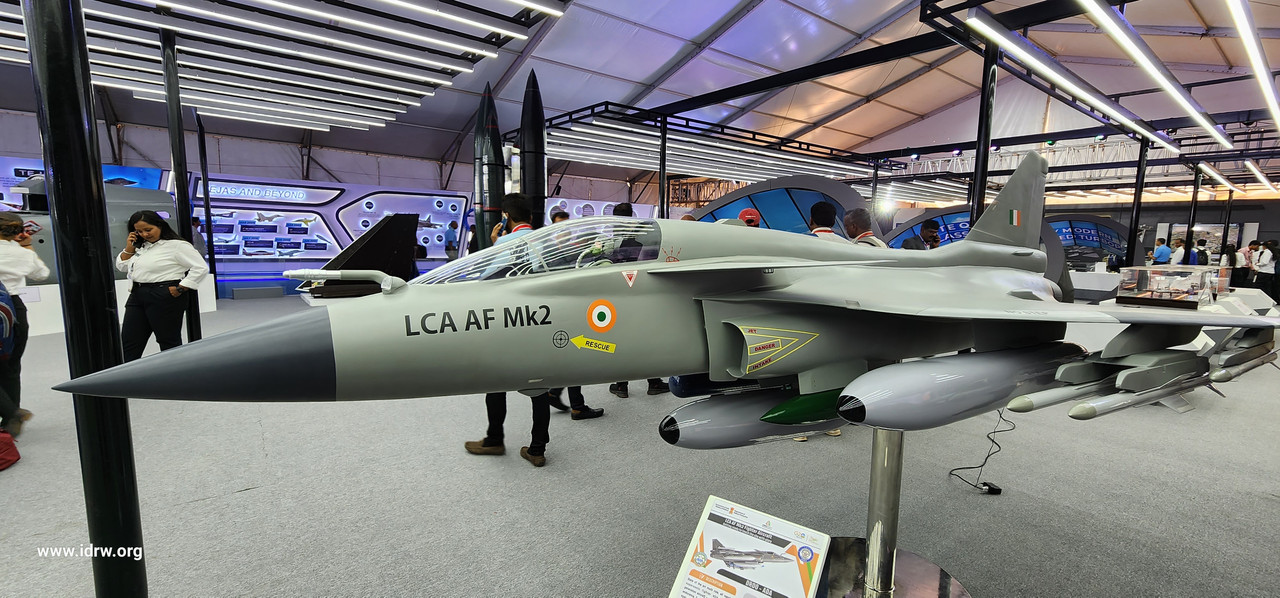
The Indian Air Force’s (IAF) next-generation fighter, the Tejas MkII, is taking a significant step forward with the assembly jigs and fixtures expected to be ready by late 2024. This paves the way for assembly to begin by the end of this year, with component orders already placed since late 2023.
To optimize the assembly process, the program prioritizes components based on delivery times. Longer lead-time components are already secured, while orders for faster-to-manufacture parts will be issued soon. This ensures a steady flow of materials and avoids delays.
Continue readingSOURCE: IDRW.ORG TEAM.
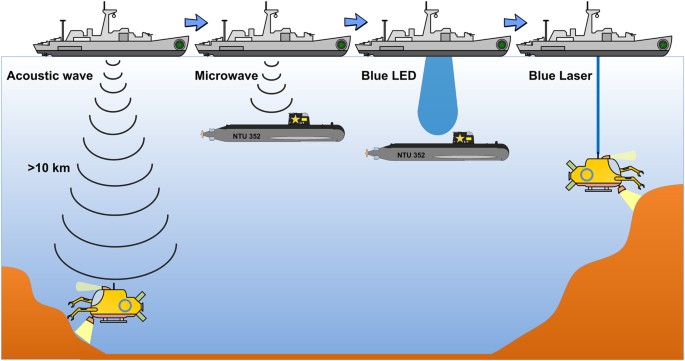
The second India-US Defence Acceleration Ecosystem (INDUS-X) summit marks a significant shift in the strategic partnership between the two nations, with a focus on co-development of military hardware rather than just co-production. This shift signifies a deeper level of collaboration and technology sharing, potentially shaping the future of defense cooperation.
The summit, scheduled for later this year, will explore the co-development of critical military technologies across various domains. This move surpasses the previous model of co-producing existing systems and aims for joint innovation and design, potentially leading to cutting-edge advancements.
Continue readingSOURCE: RAUNAK KUNDE / NEWS BEAT / IDRW.ORG

The Asian race to develop 5th generation fighter jets is heating up, with South Korea and Turkey achieving significant milestones in their respective programs, the KF-21 and TF-X (TAI KAAN). This raises concerns about India’s own AMCA program, which appears to be lagging behind despite the country’s need for advanced fighter aircraft.
Both South Korea and Turkey have demonstrated remarkable urgency in their 5th gen programs. Both programs received national priority status, enabling faster development and overcoming bureaucratic hurdles. While the KF-21 lacks an internal weapons bay (IWB) and initial deployments will be limited, it serves as a stepping stone towards a fully fledged 5th gen fighter within a decade. Similarly, the TF-X, despite relying on older American engines for now, is actively developing its own powerplant.
Continue readingSOURCE: RAUNAK KUNDE / NEWS BEAT / IDRW.ORG
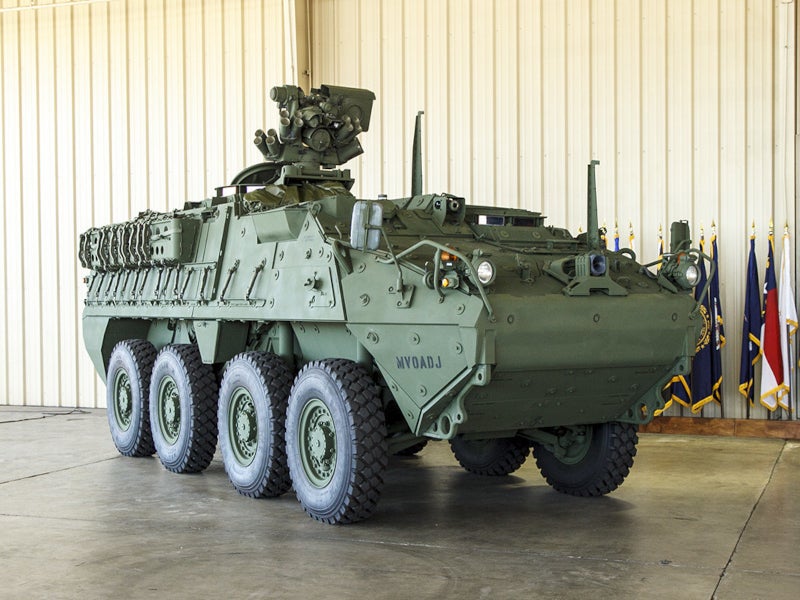
The United States’ proposal to co-produce the Stryker Armoured combat vehicle in India continues to gain momentum. A recent visit by a US team aimed to finalize specific requirements for the Indian Army’s needs. However, the project faces both potential and roadblocks.
While the Army evaluated the Stryker favorably during joint Indo-US military exercises, concerns exist about its current form. Reportedly, the smaller engine hinders its suitability for high-altitude operations. The project has also drawn criticism from Indian private and public sectors who claim they can deliver a comparable solution at a lower cost. Three local companies have proposed DRDO’s WhAP platform, while DRDO itself is developing the New Advanced Armoured Platform (AAP-Wheeled).
Continue readingSOURCE: RAUNAK KUNDE / NEWS BEAT / IDRW.ORG
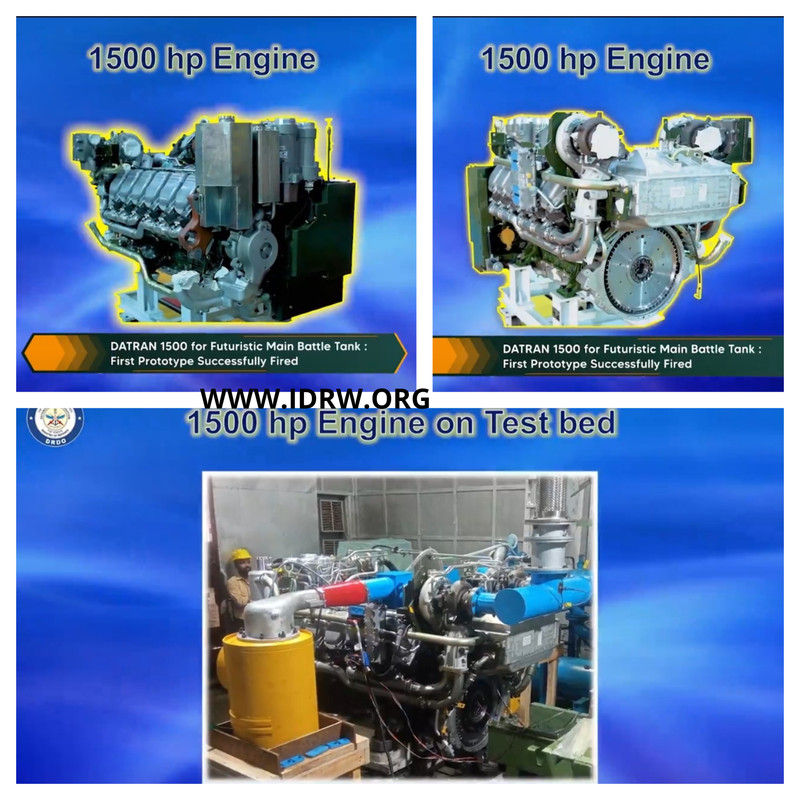
The indigenously developed DRDO DATRAN 1500 engine is inching closer to powering India’s main battle tanks, but it won’t be a quick drop-in replacement. The engine, boasting 100hp more than the current MTU MB 838 Ka-501 engines in Arjun tanks, requires modifications before seamless integration.
idrw.org has been told by the people familiar with the program Challenges that DRDO is working on for seamless integration into the Arjun tanks.
Continue readingSOURCE: IDRW.ORG
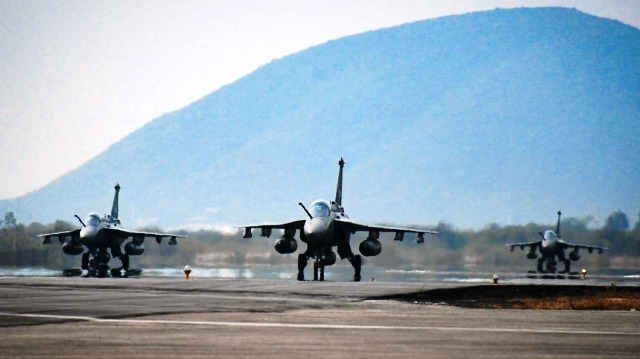
The Aeronautical Development Agency (ADA) and the Indian Air Force (IAF) have signed a Memorandum of Understanding (MoU) to integrate cutting-edge weapons and sensors into the Tejas Light Combat Aircraft (LCA). This collaboration aims to significantly enhance the operational capabilities of the Tejas, bolstering India’s air defense prowess.
The MoU was signed by Shri Prabhulla Chandran VK, Technology Director (Avionics and Weapon Systems) of ADA, and Air Vice Marshal KN Santosh VSM, Commandant of the IAF’s Software Development Institute (SDI). This partnership marks a significant step forward in indigenous defense technology development and self-reliance.
Continue readingSOURCE: IDRW.ORG TEAM.

The Indian Air Force’s (IAF) iconic Sukhoi-30MKI fighter jets are getting a major upgrade! As confirmed by HAL CMD CB Ananthakrishnan, the project is on a fast track and divided into two phases, focusing on enhancing both offensive and defensive capabilities with a strong emphasis on indigenous technology.
The first phase prioritizes equipping the Su-30MKIs with cutting-edge avionics and radars, allowing for improved situational awareness, targeting accuracy, and overall mission effectiveness. Additionally, a brand-new Electronic Warfare System (EWS) will be integrated, providing advanced electronic countermeasures against enemy threats and communication disruption capabilities. To further boost air-to-air and air-to-ground combat prowess, indigenous Infra-Red Search and Track (IRST) systems will be installed, sharpening the jets’ targeting abilities in all-weather conditions.
Continue readingSOURCE: IDRW.ORG TEAM.

Noida-based Sharang Shakti has unveiled a game-changer in the fight against drone threats: hantR, an unmanned aerial vehicle (UAV) designed for short-range airborne threat detection, tracking, and capture. As drone technology becomes increasingly accessible and affordable, their potential for misuse by adversaries grows. Small, low-altitude drones can easily infiltrate unprotected airspace, posing a significant security risk. hantR steps in to address this challenge.
This innovative UAV utilizes advanced onboard sensors for self-threat detection and 3D awareness. Its unique net-launching mechanism allows for non-lethal neutralization of drones, following military commands and mission requirements.
Continue readingSOURCE: RAUNAK KUNDE / NEWS BEAT / IDRW.ORG

The Indian Ministry of Defence (MoD) is setting its sights on the export potential for the upcoming Tejas MkII fighter jet, aiming to position it as a competitive option in the medium-category market. This strategic shift comes as several current-generation Russian fighter jet operators seek alternatives due to political tensions and rising costs.
With many former Soviet states looking to replace ageing Russian jets but finding Western options cost-prohibitive, the Tejas MkII seeks to bridge the gap. Offering advanced capabilities at a potentially attractive price point, it could become a viable contender for nations like Vietnam, Algeria, and African Countries.
Continue readingSOURCE: RAUNAK KUNDE / NEWS BEAT / IDRW.ORG
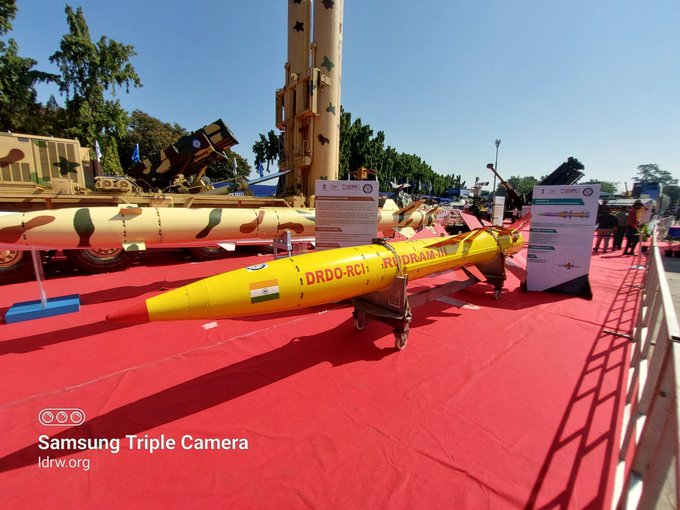
The Indian Air Force (IAF) is gearing up for the next stage in its development of the RudraM series of air-to-surface missiles. According to sources close to idrw.org, HAL Nashik Division has completed modifications on Su-30 MKI aircraft (SB-214) to enable captive flight trials of the RudraM-III, a long-range variant boasting impressive capabilities.
The RudraM-III, weighing 1.6 tons, packs a punch with its 300-400kg warhead and a staggering 600km range when launched from an 11km altitude at Mach 0.9. This significant reach surpasses its predecessors, the RudraM and RudraM-II, and expands the IAF’s strike capabilities.
Continue readingSOURCE: RAUNAK KUNDE / NEWS BEAT / IDRW.ORG

India’s state-owned Hindustan Aeronautics Limited (HAL) has completed delivery of the 15 Limited Series Production (LSP) Light Combat Helicopters (LCH Prachand) to the Indian Air Force (IAF) and Indian Army Aviation (AAC). These helicopters will be used for extensive evaluation purposes before HAL secures a major production contract.
HAL aims to acquire a contract for 145 LCH Prachands from both the IAF and AAC. To secure this deal, they have been tasked with swiftly integrating Anti-Tank Guided Missiles (ATGMs) and incorporating user-suggested minor modifications to increase firepower.
Continue readingSOURCE: IDRW.ORG TEAM.
The Indian Air Force’s (IAF) Medium Transport Aircraft (MTA) program, initially envisioned as an Antonov An-32 replacement, has undergone a shift. With plans to acquire additional C295s for the An-32 role, the focus now falls on finding a successor for the aging Ilyushin Il-76 fleet by 2035. In this new scenario, the Airbus A400M Atlas emerges as a potential frontrunner.
The IAF’s initial requirement for the MTA program was a payload capacity between 18 and 30 tonnes, primarily targeting the An-32 replacement. However, the decision to acquire more C295s has opened the door for larger and more capable aircraft for the Il-76 role.
Continue reading